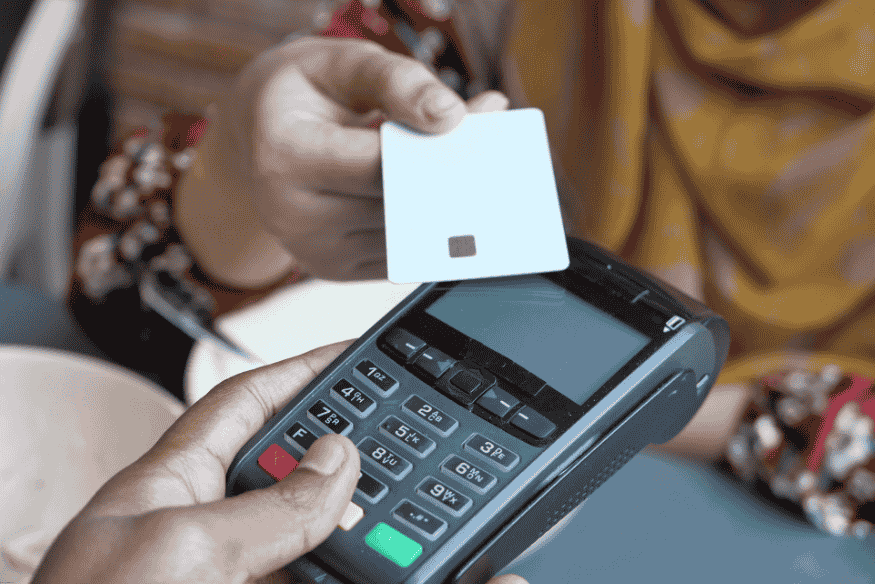In today’s rapidly digitalizing Asia, co-branded credit cards have become a defining element of the evolving fintech and consumer landscape. The rise of “super-apps” such as Grab, GoTo, Paytm, WeChat, and Alipay has changed how millions of users shop, travel, and pay. In response, banks and financial institutions across Asia are partnering with these platforms to create co-branded credit cards designed to integrate seamlessly with users’ daily digital lifestyles.
These collaborations are not just about convenience—they are about capturing loyalty in an ecosystem where payments, rewards, and lifestyle services converge. Co-branded credit cards combine the reach of super-apps with the financial credibility of banks, offering consumers exclusive perks such as cashback on rides, discounts on food delivery, loyalty points for e-commerce, and access to digital financial services.
In markets like Singapore, Indonesia, India, and China, such partnerships are booming. The pandemic accelerated this trend as consumers embraced cashless transactions and contactless payments. According to recent reports, co-branded cards linked to digital platforms now account for a significant portion of new credit card sign-ups in Asia.
This article explores how co-branded credit cards work, the leading super-app collaborations, their benefits and drawbacks, and which partnerships truly deliver long-term value. Whether you’re a frequent Grab rider, an Alipay power user, or a digital nomad managing multiple apps, understanding the co-branded credit cards Asia landscape can help you make smarter financial choices.
Understanding Co-Branded Credit Cards
A co-branded credit card is a partnership between a financial institution and a consumer brand, typically offering enhanced rewards or discounts when used within the partner’s ecosystem. In Asia, these cards are increasingly linked to super-apps—digital platforms that combine multiple services like e-wallets, e-commerce, food delivery, and ride-hailing under one interface.

For example, a Grab-UOB co-branded card in Singapore rewards users with extra GrabPoints on rides and deliveries, while India’s Paytm HDFC Bank card gives instant cashback on bill payments and shopping. Similarly, GoTo’s partnership with Bank Jago in Indonesia integrates payments, credit, and savings within the same digital platform.
The key advantage of co-branded cards lies in their ecosystem benefits. By spending within a super-app, users maximize rewards and convenience, often through real-time tracking and instant redemption. Unlike traditional cards, these partnerships also leverage user data to personalize offers and build stronger engagement.
However, not all co-branded cards are equally rewarding. Some provide inflated point systems with limited redemption value, while others impose strict conditions for earning benefits. Understanding how each program structures its rewards is crucial for maximizing returns and ensuring your spending aligns with the card’s ecosystem.
The Rise of Super-Apps and Financial Integration
Super-apps have redefined digital payments in Asia. Originally launched as ride-hailing or messaging platforms, they have evolved into comprehensive ecosystems that integrate e-wallets, lending, insurance, and investment tools. Co-branded credit cards are the latest step in this evolution.
For instance, Grab in Southeast Asia and GoTo in Indonesia have successfully transformed into financial service providers through partnerships with established banks. These alliances allow users to access credit while staying within the super-app’s ecosystem. Similarly, WeChat Pay and Alipay in China have expanded their payment networks globally, introducing cards that bridge online and offline transactions.
This financial integration benefits both consumers and companies. Users gain seamless payment experiences and tailored perks, while super-apps deepen engagement and banks acquire valuable customer data for risk assessment and product design.
The trend underscores a broader shift: Asia’s financial future is moving toward digital ecosystems that combine lifestyle and finance. Co-branded cards serve as a bridge between traditional banking and the super-app economy.
Leading Co-Branded Credit Card Partnerships in Asia
The co-branded credit cards Asia market features diverse collaborations across countries, each designed to serve specific user segments. Some notable examples include:
| Super-App | Partner Bank | Key Perks |
|---|---|---|
| Grab | UOB / Citi | Extra GrabRewards, food delivery discounts, travel insurance |
| GoTo | Bank Jago | Integrated digital account, cashback on Gojek & Tokopedia |
| Paytm | HDFC Bank | Instant cashback, fuel discounts, digital wallet top-ups |
| Alipay | ICBC / Standard Chartered | Global acceptance, luxury brand discounts |
| KakaoPay | Hana Bank | Reward points for online purchases and QR code payments |
These partnerships reflect Asia’s diversity in both consumer behavior and financial maturity. In emerging markets like Vietnam and the Philippines, similar models are emerging, offering micro-credit solutions and installment plans for online shoppers.
What makes these partnerships thrive is the synergy between lifestyle convenience and financial value—a key factor that continues to attract tech-savvy consumers across the region.
Benefits of Co-Branded Credit Cards for Consumers
Co-branded credit cards provide a variety of tangible benefits tailored to digital lifestyles:
- Enhanced Rewards: Earn more points or cashback when spending within partner apps.
- Integrated Ecosystem: Manage rides, food orders, shopping, and payments in one platform.
- Seamless Redemption: Instant rewards applied during transactions.
- Exclusive Perks: Early access to sales, travel upgrades, and event invitations.
- Credit Access for Millennials: Easier approval through partnerships with fintech ecosystems.
These cards also strengthen financial inclusion. Many young professionals and gig workers who were previously underserved by banks now gain access to credit through their daily-use apps. The convenience of in-app spending and real-time notifications enhances financial control and transparency.
However, while benefits are appealing, users should assess annual fees, interest rates, and reward expirations. The best card is one that matches your actual spending habits—not just the most advertised perks.
How Banks Benefit from Super-App Partnerships
For traditional banks, co-branding with super-apps provides an opportunity to reach younger, digitally engaged audiences. Rather than competing against fintechs, banks are leveraging partnerships to stay relevant in a mobile-first era.
Through data integration, banks can analyze consumer spending behavior in real time, allowing them to design personalized financial products and credit offers. These partnerships also reduce customer acquisition costs, as super-apps already have massive user bases.

Banks benefit from increased transaction volume, enhanced brand exposure, and access to untapped market segments such as gig economy workers or small business owners who rely on super-apps for income.
In return, super-apps gain legitimacy and regulatory backing by associating with licensed financial institutions. The collaboration becomes mutually beneficial, balancing innovation with financial security—a combination that defines the success of co-branded credit cards in Asia.
Challenges and Limitations
Despite their success, co-branded credit cards face challenges. Data privacy, regulatory compliance, and cybersecurity are growing concerns as banks and apps share vast amounts of user information.
Another issue is ecosystem dependency—users must remain active in a specific app to fully benefit from the card. If they switch to competitors or move to a different market, the card’s value may diminish.
Some users also find redemption processes confusing, with rewards tied to complex point systems or limited validity. In addition, high interest rates on revolving balances can erode the value of cashback earned.
Regulators across Asia are addressing these issues through stronger data protection laws and transparency requirements. Platforms that emphasize security and simplicity are likely to maintain user trust and long-term success.
Regional Insights: Southeast Asia, China, and India
Southeast Asia is leading the co-branded credit cards Asia trend, driven by platforms like Grab, GoTo, and ShopeePay. In these fast-growing economies, digital payments are now mainstream, and co-branded cards have become gateways to broader financial inclusion.
In China, Alipay and WeChat dominate, integrating global payment solutions with local consumer loyalty programs. Their partnerships with banks such as ICBC and Standard Chartered allow seamless cross-border transactions for international travelers.
India’s landscape is shaped by Paytm, Google Pay, and PhonePe, where partnerships with major banks provide flexible credit access to millions of new users. The Indian government’s push for cashless payments through UPI infrastructure further supports growth.
Each region reflects local consumer behavior, regulatory maturity, and technological adoption—yet all share a common theme: the fusion of convenience and financial empowerment through co-branded credit cards.
Comparing Rewards and Value
Not all co-branded cards are created equal. While some offer high cashback rates, others prioritize loyalty points or lifestyle benefits. A simplified comparison illustrates the range:
| Card | Ideal For | Key Advantage |
|---|---|---|
| Grab-UOB Card | Daily commuters | 6% cashback on Grab rides and deliveries |
| GoTo-Bank Jago | Online shoppers | Integrated app wallet and bonus cashback |
| Paytm HDFC | Bill payers | Instant cashback and no joining fees |
| KakaoPay Hana | Korean consumers | Discounts on e-commerce and QR payments |
Investors and consumers should evaluate the real value per dollar spent, factoring in redemption flexibility, annual fees, and spending thresholds. The best partnerships are those that offer transparency and align closely with users’ digital habits.
The Future of Co-Branded Credit Cards in Asia
The future of co-branded credit cards Asia will be shaped by personalization and fintech innovation. Artificial intelligence will soon enable dynamic rewards, adapting benefits based on spending patterns. Blockchain integration could enhance security and cross-border functionality, while contactless payment technologies will further simplify user experience.
Expect to see new players, such as e-commerce giants and travel platforms, entering the co-branding space. Sustainability-focused cards may also emerge, rewarding users for eco-friendly purchases and carbon offset contributions.
As regulators establish clearer frameworks for digital finance, competition will intensify—ultimately benefiting consumers through better rates, stronger protections, and more customized rewards.
Co-Branded Cards and Financial Inclusion
One of the most significant impacts of co branded credit cards Asia is their role in promoting financial inclusion. In many Asian countries, large portions of the population remain underbanked or lack access to traditional credit systems. By collaborating with super-apps that already have extensive user bases, banks can reach new segments of customers who might otherwise be excluded from formal financial services.
These cards often offer simplified onboarding processes through digital verification, removing the need for physical documentation or in-branch visits. Gig economy workers, freelancers, and small business owners—who frequently use super-apps like Grab or GoTo for income—can now access credit lines and financial products tailored to their cash flow.
In addition, co-branded cards encourage financial literacy. Through app-based dashboards, users can monitor expenses, track rewards, and manage budgets in real time. Many platforms even provide financial education tools, helping first-time credit users understand responsible borrowing.
By bridging the gap between fintech innovation and traditional banking, these partnerships empower millions of new consumers. As adoption expands across rural and semi-urban areas, co-branded cards could become a cornerstone of Asia’s push toward digital financial inclusion, creating a more equitable and connected economy.
Security, Data Privacy, and Consumer Trust
As co branded credit cards Asia integrate deeper into digital ecosystems, security and data privacy have become critical priorities. These cards collect and process vast amounts of consumer information—from transaction history and spending patterns to location and personal identifiers. While this data enables personalized rewards and insights, it also raises concerns about misuse and cyber threats.
To build consumer trust, banks and super-apps must adopt advanced cybersecurity measures, including multi-factor authentication, tokenization, and AI-driven fraud detection systems. Transparent privacy policies and compliance with data protection laws such as Singapore’s PDPA, India’s DPDP Act, and the EU’s GDPR (for cross-border platforms) are essential for maintaining credibility.
Educating users about safe online practices—such as avoiding phishing scams and enabling app-level security features—also strengthens protection. Many partnerships are now introducing biometric authentication and encrypted payment gateways to further enhance safety.

Ultimately, the future success of co-branded cards depends not only on attractive rewards but also on consumer confidence. Platforms that prioritize ethical data use and invest in robust security infrastructure will continue to earn loyalty, ensuring that Asia’s growing digital finance ecosystem remains both innovative and trustworthy.
Conclusion
Co-branded credit cards in Asia symbolize the region’s digital transformation—where technology, lifestyle, and finance converge. These partnerships have redefined customer engagement by offering seamless integration between everyday digital activities and financial benefits.
For consumers, they present unmatched convenience and rewards tailored to regional lifestyles. For banks and fintechs, they open new opportunities for collaboration, inclusion, and innovation.
However, success requires informed choices. Consumers must understand each card’s structure, limitations, and true value beyond the marketing hype. The most rewarding partnerships are those that balance flexibility, transparency, and long-term utility.
As Asia continues to lead in digital payments, co-branded credit cards will remain at the heart of the super-app economy—driving loyalty, enhancing user experience, and setting new standards for financial connectivity across the region.









